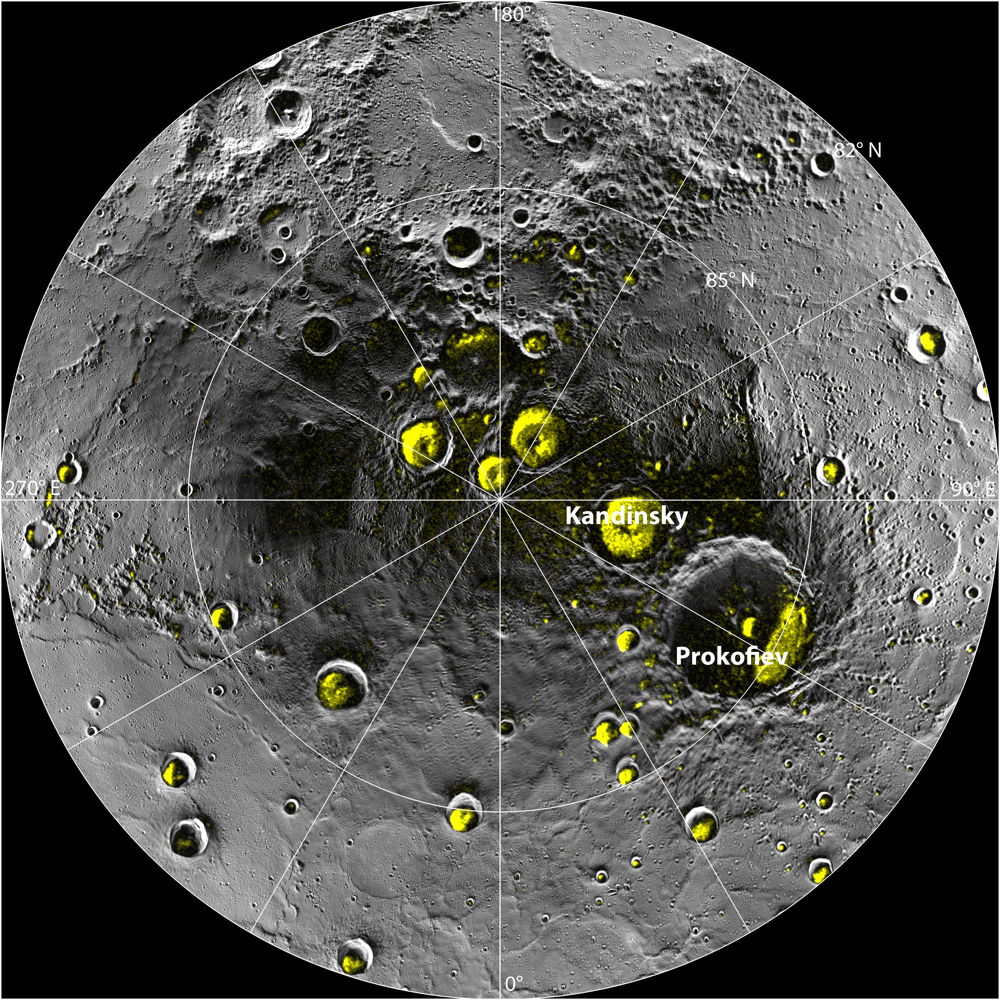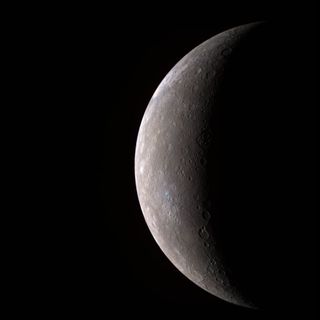
The discovery of huge amounts of water ice and possible organic compounds on the heat-blasted planet Mercury suggests that the raw materials necessary for life as we know it may be common throughout the solar system, researchers say.
Mercury likely harbors between 100 billion and 1 trillion metric tons of water ice in permanently shadowed areas near its poles, scientists analyzing data from NASA's Messenger spacecraft announced Thursday (Nov. 29).
Life on sun-scorched Mercury remains an extreme longshot, the researchers stressed, but the new results should still put a spring in the step of astrobiologists around the world.
"The more we examine the solar system, the more we realize it's a soggy place," Jim Green, the director of NASA's Planetary Science Division, said during a press conference today.
"And that's really quite exciting, because that means the amount of water that we have here on Earth — that was not only inherent when it was originally formed but probably brought here — that water and other volatiles were brought to many other places in the solar system," Green added. "So it really bodes well for us to continue on the exploration, following the water and its signs throughout the solar system." [Latest Mercury Photos from Messenger]
Organics, too?
The observations by Messenger, which has been orbiting Mercury since March 2011, provide compelling evidence that reflective patches first spotted near the planet's poles by the Arecibo radio telescope in Puerto Rico two decades ago are indeed water ice, researchers said.
Get the Space.com Newsletter
Breaking space news, the latest updates on rocket launches, skywatching events and more!
In the coldest parts of Mercury — permanently shadowed regions where temperatures drop to perhaps minus 370 degrees Fahrenheit (minus 223 degress Celsius) — this ice can lie bare and exposed. But Messenger's data also show that much more frozen water is found in slightly warmer areas, buried beneath a strange dark material that acts as an insulator.
This dark stuff is likely a mixture of complex organic compounds, the carbon-containing building blocks of life as we know it, researchers said during Thursday's news conference.
"This organic material may be the same type of organic material that ultimately gave rise to life on Earth," said Messenger participating scientist David Paige of UCLA.

Helping scientists read the book of life
Mercury probably acquired much of its water and organic material the same way Earth did, researchers said — via comet impacts and asteroid strikes. Ice and organics are common on the frigid bodies in the solar system's outer reaches.
"There's a lot of water out there, as there is a lot of water around other stars, but at substantial distance," said Messenger principal investigator Sean Solomon, of Columbia University's Lamont-Doherty Earth Observatory.
With its ultra-thin atmosphere and proximity to the sun, Mercury is probably not a good bet to host life as we know it. But finding ice and organics there should still inform the hunt for organisms beyond Earth and aid scientists' quest to learn more about how life took root on our planet.
"The history of life begins with the delivery to some home object of water and of the building blocks, the organic building blocks, that must undergo some kind of chemistry, which we still don't understand on our own planet," Solomon said.
"And so Mercury is becoming an object of astrobiological interest, where it wasn't much of one before," Solomon added. "That's not say to say that we expect to find any lifeforms — I don't think anybody on this table does — but in terms of the book of life, there are some early chapters, and Mercury may indeed inform us about what's in those chapters."
Follow SPACE.com senior writer Mike Wall on Twitter @michaeldwall or SPACE.com @Spacedotcom. We're also on Facebook and Google+.
Join our Space Forums to keep talking space on the latest missions, night sky and more! And if you have a news tip, correction or comment, let us know at: community@space.com.

Michael Wall is a Senior Space Writer with Space.com and joined the team in 2010. He primarily covers exoplanets, spaceflight and military space, but has been known to dabble in the space art beat. His book about the search for alien life, "Out There," was published on Nov. 13, 2018. Before becoming a science writer, Michael worked as a herpetologist and wildlife biologist. He has a Ph.D. in evolutionary biology from the University of Sydney, Australia, a bachelor's degree from the University of Arizona, and a graduate certificate in science writing from the University of California, Santa Cruz. To find out what his latest project is, you can follow Michael on Twitter.
Most Popular

